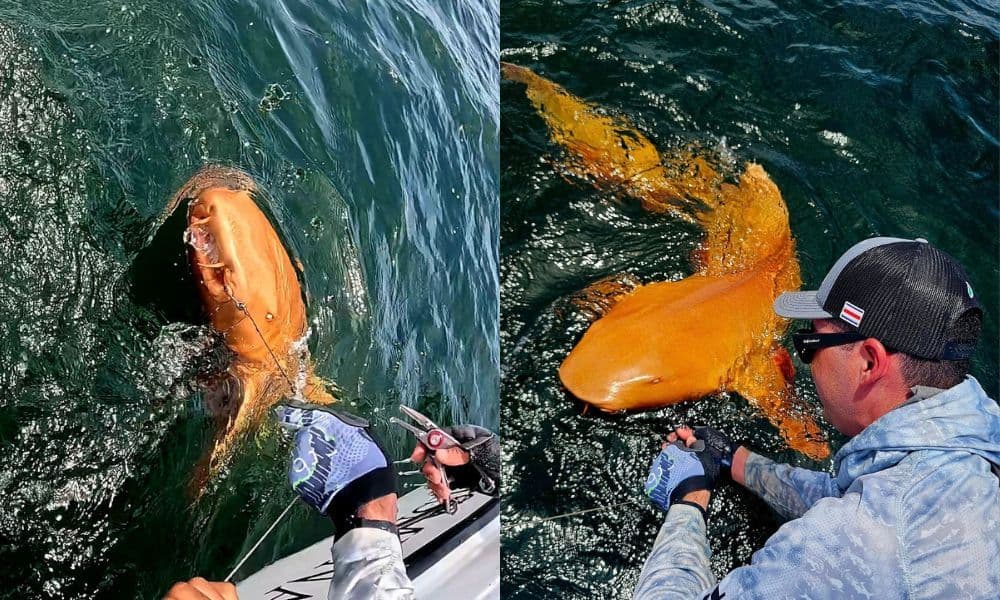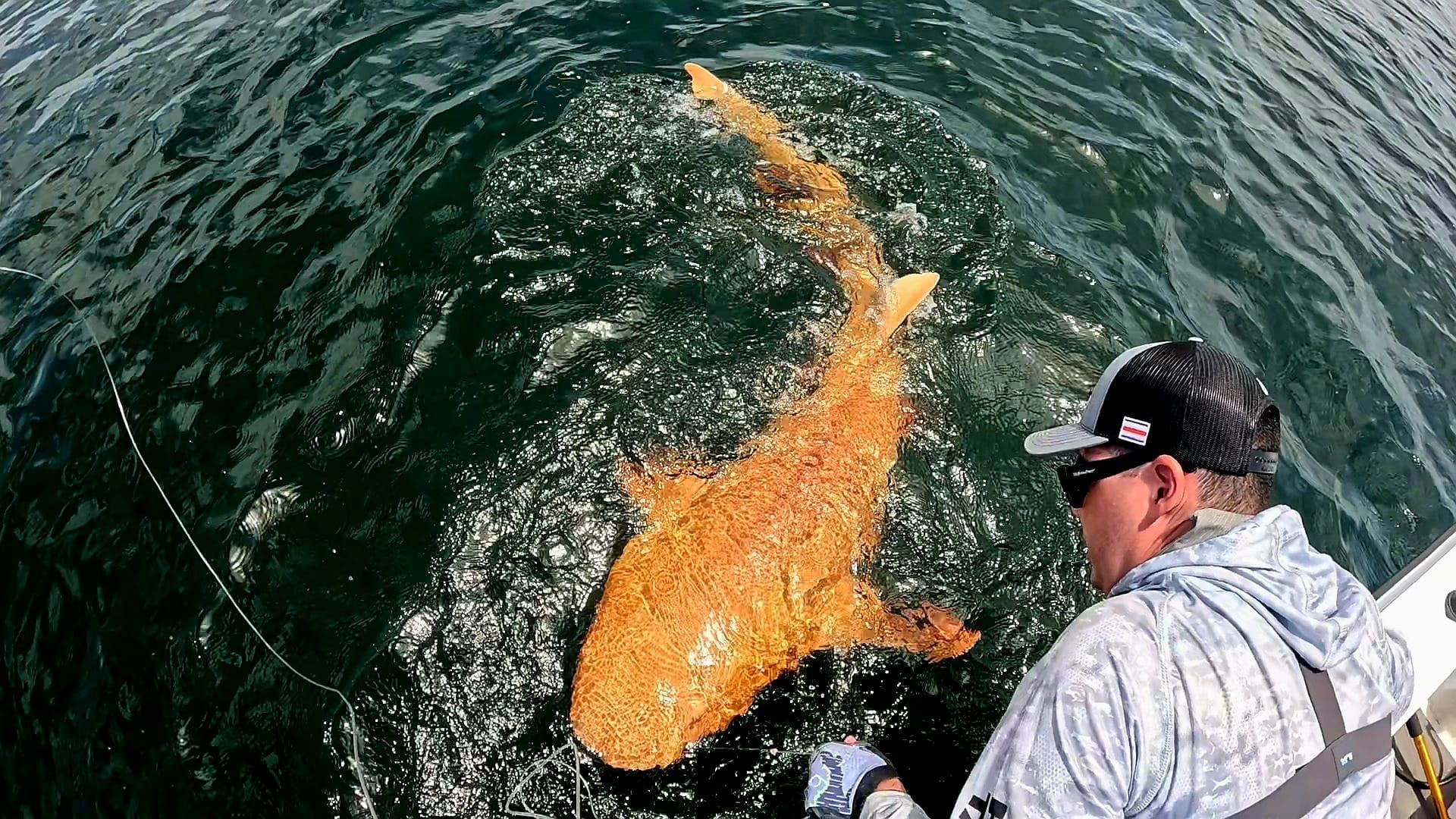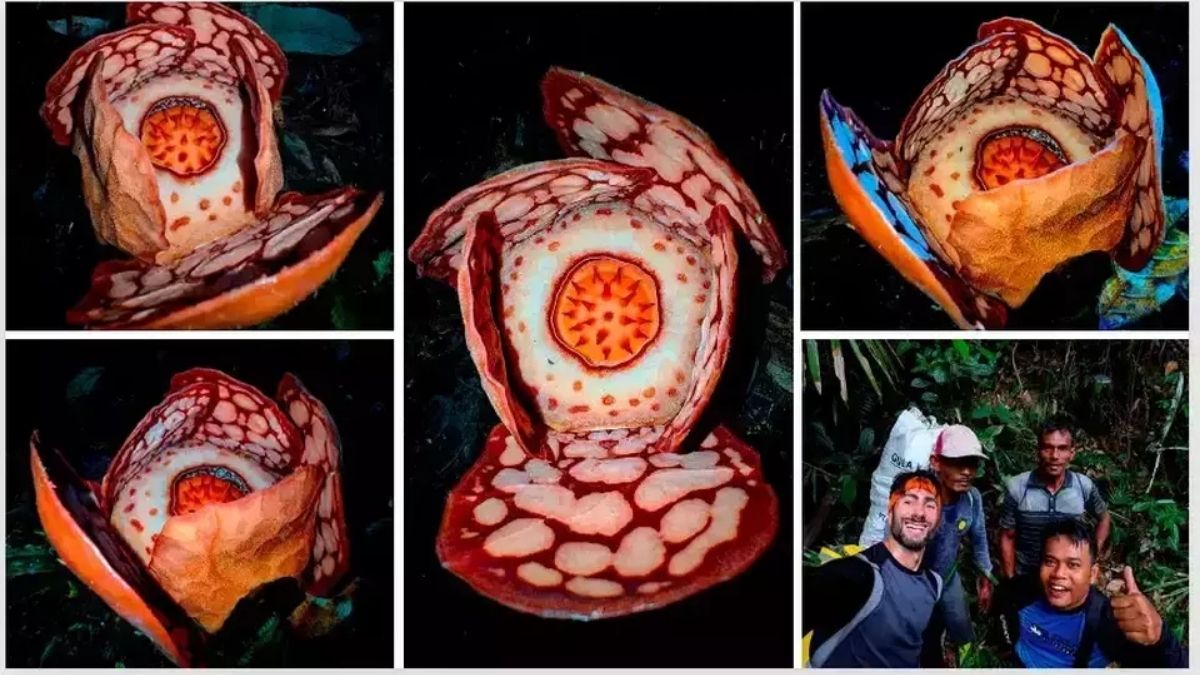Rare orange nurse shark discovered off Costa Rica confirmed as first scientific case
An angler in Costa Rica caught a rare bright orange nurse shark near Tortuguero National Park. Scientists confirmed it as the first documented case of total xanthism in the species, with its white eyes suggesting albinism as well.

- A six-foot-six nurse shark with bright orange skin was caught in August 2024 near Tortuguero National Park, Costa Rica.
- Scientists confirmed it as the first documented case of total xanthism in the species and the first record in the Caribbean.
- Its white eyes suggest a possible overlap with albinism, adding to its rarity.
Costa Rica - A fisherman in Costa Rica has made a remarkable catch, reeling in what scientists confirm to be the first documented orange nurse shark.
The six-foot-six shark was caught in August 2024 by angler Garvin Watson while fishing near Tortuguero National Park. Angler Garvin Watson caught a six-foot-six shark in August 2024 near Tortuguero National Park, sharing photos on his Parismina Domus Dei Hotel's Facebook page. Watson described the moment as “incredible” and said he and his crew could hardly believe their eyes. “We couldn't believe what we had in front of us, an orange shark that looked like an alien.” Watson told USA TODAY on 28 August.
He described the experience of hauling in the brightly coloured shark as unlike anything he had encountered before. The shark was later released back into the water after documentation.
Researchers later identified the cause as xanthism, a rare genetic condition that gives animals golden, yellow, or orange pigmentation.
Adding to its rarity, the shark’s white eyes suggest it also exhibits albinism, a separate condition involving reduced or absent pigment. This combination of xanthism and possible albinism makes the specimen a unique genetic case.
The shark’s unusual neon-orange colour and striking white eyes set it apart from anything seen before in the species, indicating a condition known as albino-xanthochromism

A study published in the journal Marine Biodiversity by scientists Marioxis Macías-Cuyare, Gilberto Rafael Borges Guzmán, and Daniel Arauz-Naranjo confirmed the catch as “the first scientifically documented case of total xanthism in the species and the first record from the Caribbean Sea.”
Photos and video evidence reviewed by the researchers show the shark’s eyes lacked visible irises, appearing entirely white. Normally, nurse sharks have a dark iris. Scientists concluded that this detail reinforced the theory of overlapping pigment-related anomalies.
The documentation is significant not only for the shark’s unusual appearance but also for marine biology. Nurse sharks (Ginglymostoma cirratum) are common in tropical and subtropical waters of the Atlantic and Caribbean. They are usually brown or grey in colour, making this bright orange specimen a striking outlier.
Researchers emphasised the importance of such findings for understanding genetic mutations in marine species. Cases of xanthism, although rare, help scientists better grasp how pigmentation disorders affect survival, camouflage, and vulnerability to predators in the wild.
The discovery also highlights Costa Rica’s Tortuguero National Park as a vital habitat for biodiversity, both above and below water. The park is already globally recognised for its sea turtle nesting grounds and rich marine life, now joined by a one-of-a-kind shark record.








0 Comments